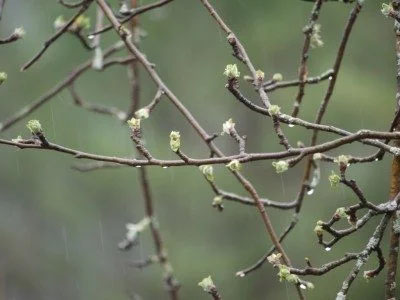Some people are trying to reach us through the comments, which goes to our webmaster.
Please email us at , or simply call us at 250-748-4489. Thank you!!
|
|
||
|
With the late spring, many of the fruit trees have not budded by now. There is still a small window of time to spray dormant spray for pest control later in the year.  Photo R. Siegel “Dormant oil sprays are used on fruit trees before the buds begin to swell and suffocate insects and their eggs nesting in branches. Using dormant oil on fruit trees doesn’t completely eliminate the problem with these pests, but it is the best way to cut off most of the population, leaving a simpler problem later in the season.” Read more at Gardening Know How: What Is Dormant Oil: Information About Dormant Oil Sprays On Fruit Trees https://www.gardeningknowhow.com/edible/fruits/fegen/dormant-oil-information.htm
If you have any concerns whatsoever, we are qualified to do dangerous tree risk assessment. Please call us at (250) 748-4489.
This video shows a tree falling without warning on a highway in Washington State.
They suggest that you inspect the land surrounding your property and remove highly flammable vegetation such as pine and fir trees, and keep lawns green and mowed. Move landscaping plants and vines away from the sides of your property. They recommend the creation of a “safe zone” around your home. Make sure your roof is free from debris and clean your gutters often. Read the full article here.
Trees go through a process similar to hibernation called dormancy, and that is what keeps them alive during the winter. Dormancy is like hibernation because metabolism, energy consumption and growth within the plant slow down. This is an interesting little video that explains how your trees survive the cold we are presently experiencing. Be sure to rake up all the fallen leaves and put them into the compost. If the leaves are left, they can encourage fungal growth, other diseases and insects.
A tree may need pruning for a variety of reasons: Dormant spraying your fruit trees for pests is best done starting in November up until March if the weather stays cool.
Some sprays that can be used are: Apples: Spray copper before fall rains; dormant oil once or twice from January through March; lime-sulfur in January or February (just before buds open) and wettable sulfur just after petal fall. Apricots: Spray copper before the fall rains and dormant oil in February. Cherries: Use wettable sulfur or lime-sulfur applied weekly during blooming for brown rot. Information on synthetic sprays to control cherry fruit fly is available at your local county office of the OSU Extension Service. Pears: Spray copper before the fall rains; spray lime-sulfur two to three times beginning in fall, again during winter, and finally in March just before buds open; spray dormant oil in early spring before buds open and wettable sulfur just after petal fall. Peaches: Spray copper or a good dormant fungicide three to four times between December and bud break. Spray copper or lime-sulfur before fall rains and in spring just before bud break; apply sulfur weekly during blooming and again after all petals have fallen. For the full list and further information, click here. Trees need deep root watering. So during water restrictions, when you are allowed, give them a good long drink. And then mulch, mulch, mulch, to slow evaporation and keep the ground cool. Minimize or stop pruning or trimming to avoid scorching your shrubs. For best results, avoid planting until the fall. Local nurseries will often agree to keep your trees or shrubs until fall if you pay for them now when you have more of a choice. Here is a good video we found explaining about winter pruning of fruit trees, what to prune and what not to prune. Climbing up into fruit trees in the cold can be a risky business. Give us a call at (250)-748-4489. |
||
|
Copyright © 2024 Godolphin Tree Service - All Rights Reserved Powered by WordPress & Atahualpa |
||